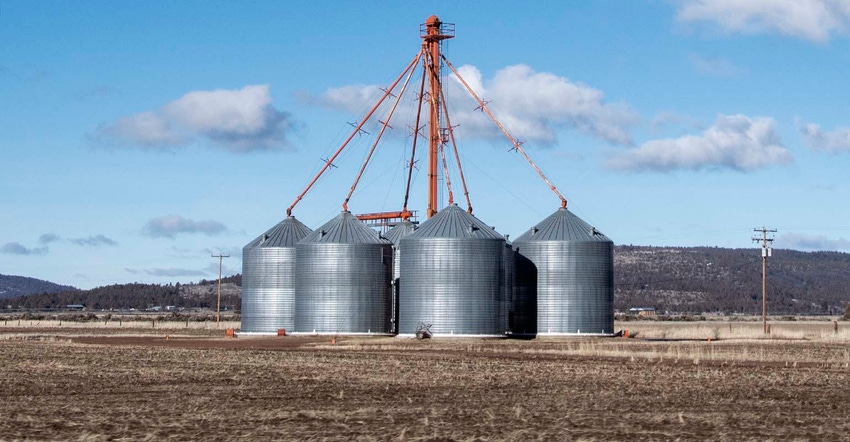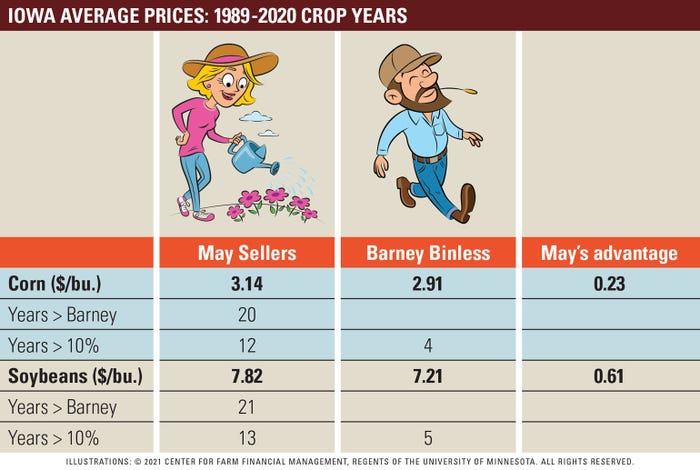
Harvest is here and there can be no better time to introduce May Sellers. Unlike Barney Binless, May is a celebrity producer who uses the most popular marketing approach at harvest: place unpriced grain in storage and wait to sell later in the crop year.
May Sellers has on-farm storage. She is aware of seasonal price patterns that point to, on average, the highest cash prices for corn and soybeans in May or June. Every year she holds her crop in storage to sell in late spring. Her price is the cash price of corn or soybeans on the Friday between May 25 and 31, less variable storage costs. Variable storage costs consider interest on debt (I assume May has a line of credit) and in-and-out costs to account for shrinkage (8 cents and 11 cents/bu., respectively, for corn and soybeans).
While May has on-farm storage, it is a rare producer who has enough on-farm storage to hold 100% of their crop. I want my celebrity producers to be grounded in reality, so May and other producers who store grain are limited to holding 80% of their harvest in on-farm storage. The remaining 20% of their crops are sold at harvest, at Barney’s harvest price. This 20% sale of at harvest is reflected in the weighted average prices shown in the accompanying table.

Over the course of 32 years, May’s “hold until late spring” strategy pays off. She beat Barney by 23 and 61 cents/bu., respectively, in corn and soybeans. This is net of storage costs and despite the fact that 20% of her grain is sold at harvest.
However, I think it is important to consider more than just the average price received over time. Did you notice that May beats Barney in only 20 or 21 of 32 years? That might strike you as a less than stellar batting average. It is important to know that in most of the years when May comes up short, her loss relative to Barney is modest.
I also like to look at the number of years when the margin of victory is greater than 10% (e.g., 40 cents or more on $4 corn, $1 or more on $10 soybeans). Here the margin clearly favors May.
May Sellers shows us that, over time, holding unpriced grain after harvest can be a profitable venture, but not without risk.
Meet the rest of the crew:
Usset is a grain market economist at the University of Minnesota, and author of the book “Grain Marketing Is Simple (It’s Just Not Easy).” Reach Ed at [email protected].
The opinions of the author are not necessarily those of Farm Futures or Farm Progress.
About the Author(s)
You May Also Like






